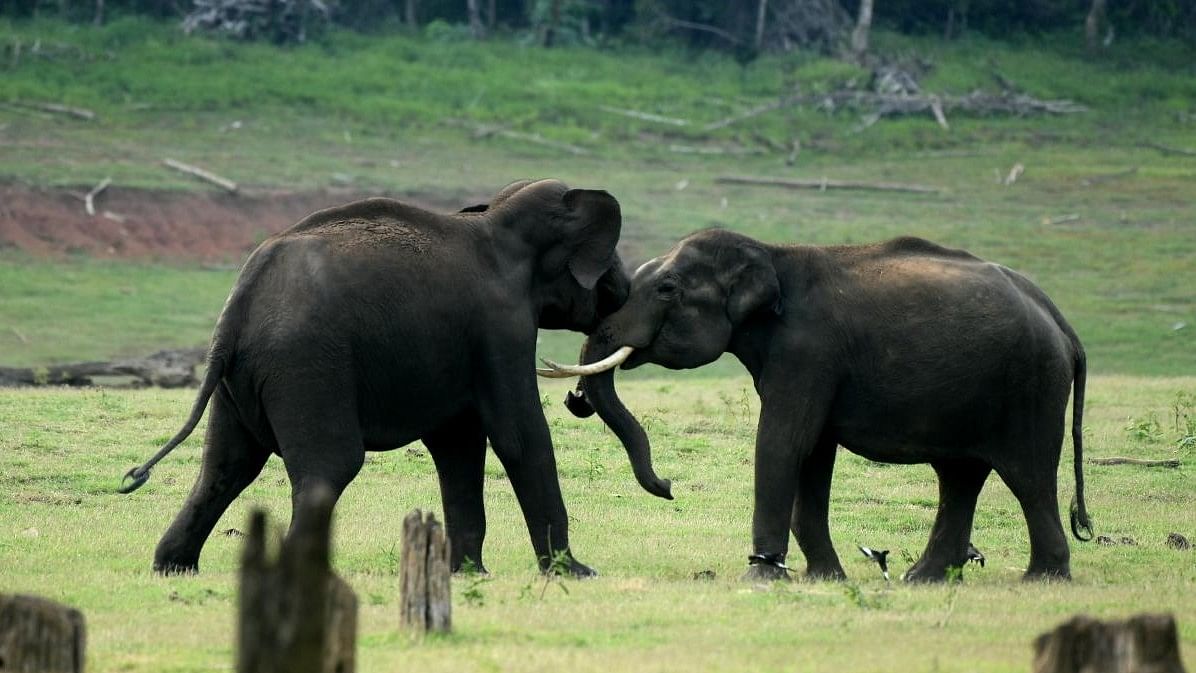
Representative image of elephant.
Credit: Special Arrangement
Food distribution influenced by human interference in natural habitats can intensify competition and trigger hostile social behaviour among wild animals, a new study that tracked female elephants in the Kabini grassland has found.
Scientists from the Jawaharlal Nehru Centre for Advanced Scientific Research (JNCASR) in Bengaluru studied how distribution of grass influenced interactions among female elephants within and outside of clans. The anthropogenic creation of a resource – the Kabini reservoir along the Beechanahalli dam, built in the 1970s – has led to a “strong, unusual” competition regime.
Two scientists from JNCASR’s Evolutionary and Organismal Biology Unit, Hansraj Gautam and Prof T N C Vidya, carried out the study in the Nagarahole National Park and Tiger Reserve. The study area comprises an open grassland, formed in the dry season by receding waters of the Kabini reservoir.
Prof Vidya noted that the findings presented another case against building large-scale reservoirs in natural habitats like national parks. “There are many reasons to not construct dams in these habitats; the disruption they could cause to the social behaviour of animals is another,” she told DH.
Elephants that use the grassland are being studied as part of the Kabini Elephant Project, since 2009; behavioural data for the study were collected since 2015-16. The study has been published in the journal Royal Society Open Science.
While male Asian elephants move alone, females exhibit fission-fusion dynamics within their clans – a tendency to distribute themselves across multiple groups whose size and composition change constantly.
The species is identified with low competitive behaviour, attributed to diverse reasons including their fission-fusion patterns and non-territorial nature. Contests are not the norm also because their primary food – grass and vegetative plant parts – is, typically, well dispersed.
Frequent contests were recorded between and within clans in the area where grass is the most available food.
The researchers noted that these contests are rare in the neighbouring Mudumalai forest, another area where the elephants’ diet largely comprises grass.
They recorded food patchiness (abundant quantities distributed in patches) in the grassland which has at least three times the grass biomass as the neighbouring forests of Nagarahole and Bandipur.
The “exceptionally high” elephant density in the area was traced to fresh grass patches formed by the receding waters.
“Resources present in large amounts are generally seen as beneficial to the animals but the distribution of these resources is key. High-quality resources (grass) that are concentrated in clumps could, in fact, cause the
opposite effect,” Prof Vidya said.
The findings are partly consistent with the Ecological Model of Female Social Relationships which states that food distribution primarily determines competition and conflict between and within groups.
The researchers underlined the findings against the backdrop of grassland habitats around Kabini and other recently created reservoirs. These resource-rich reservoirs, while hosting a large number of
elephants, are also setting off intensified competition and can change the fabric of social interactions among group-living species, they said.